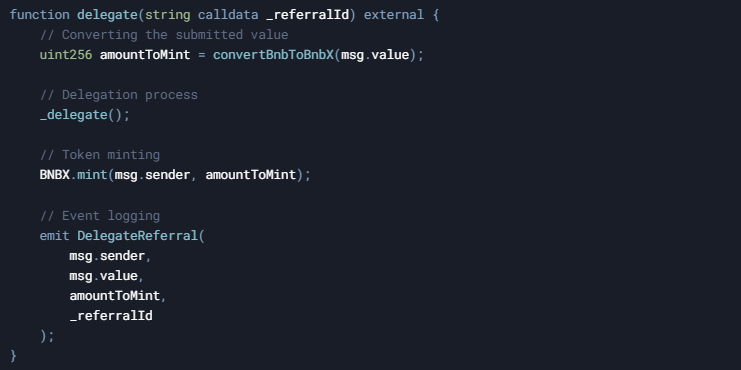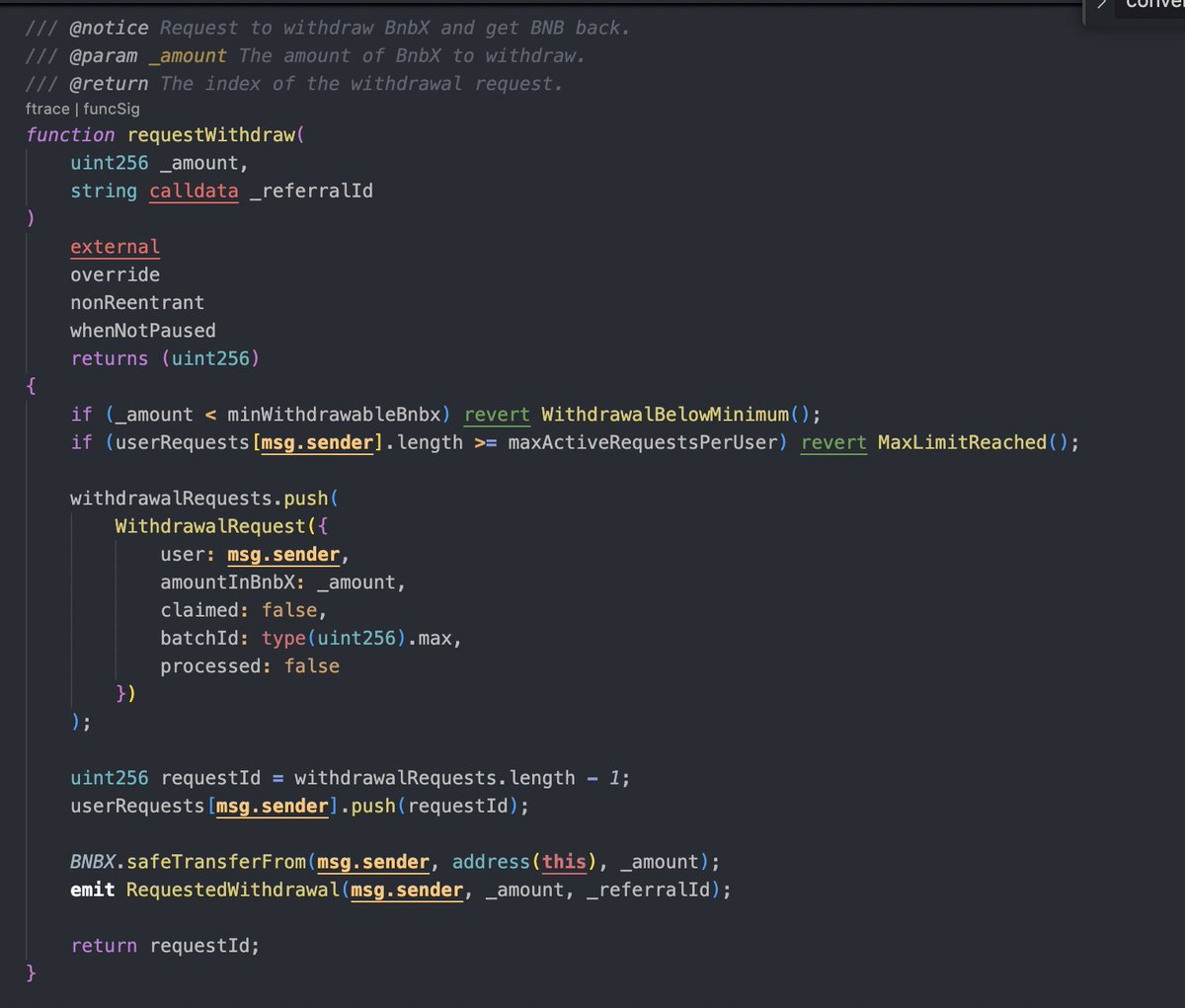Liquid Staking Unveiled: The Technology Powering Stader Labs BNBx
The Technical Architecture of Liquid Staking
Liquid Staking is more than an investment concept – it's a complex technological solution redefining the boundaries of traditional blockchain investments. Using Stader Labs as an example, the technical mechanisms become particularly clear.
The Conversion Process: From BNB to BNBx
Imagine you want to make your BNB tokens more productive. The process begins with a precise mathematical calculation. The convertBnbToBnbX function is the key to token conversion:

Practical Example: Let's say you invest 100 BNB. The smart contract precisely calculates how many BNBx tokens you'll receive. If 10,000 BNBx are already in circulation and 5,000 BNB are delegated, the algorithm will convert your tokens accordingly.
The Delegation Mechanism: Security and Efficiency
The delegate() mechanism demonstrates the process's complexity:

Security Features:
- Precise value calculation
- Automatic token generation
- Comprehensive event documentation
Withdrawal Process: Complex Security Mechanisms
The requestWithdraw() function implements multi-layered security checks:

Real-World Technology Impact
A concrete scenario: An investor with 50 BNB could:
- Immediately receive BNBx tokens
- Generate staking rewards
- Simultaneously use tokens in other DeFi protocols
Technical Challenges and Solutions
Implementing Liquid Staking requires:
- Mathematically precise calculation algorithms
- Highly secure smart contracts
- Dynamic adaptability
Risk Minimization
Stader Labs minimizes risks through:
- Multiple security verifications
- Mathematical protection algorithms
- Transparent tokenization mechanisms
Future Outlook
Liquid Staking represents more than an investment strategy – it's a technology platform that:
- Increases blockchain liquidity
- Expands investor opportunities
- Promotes decentralization
Disclaimer: Technical analysis. Not investment advice.
